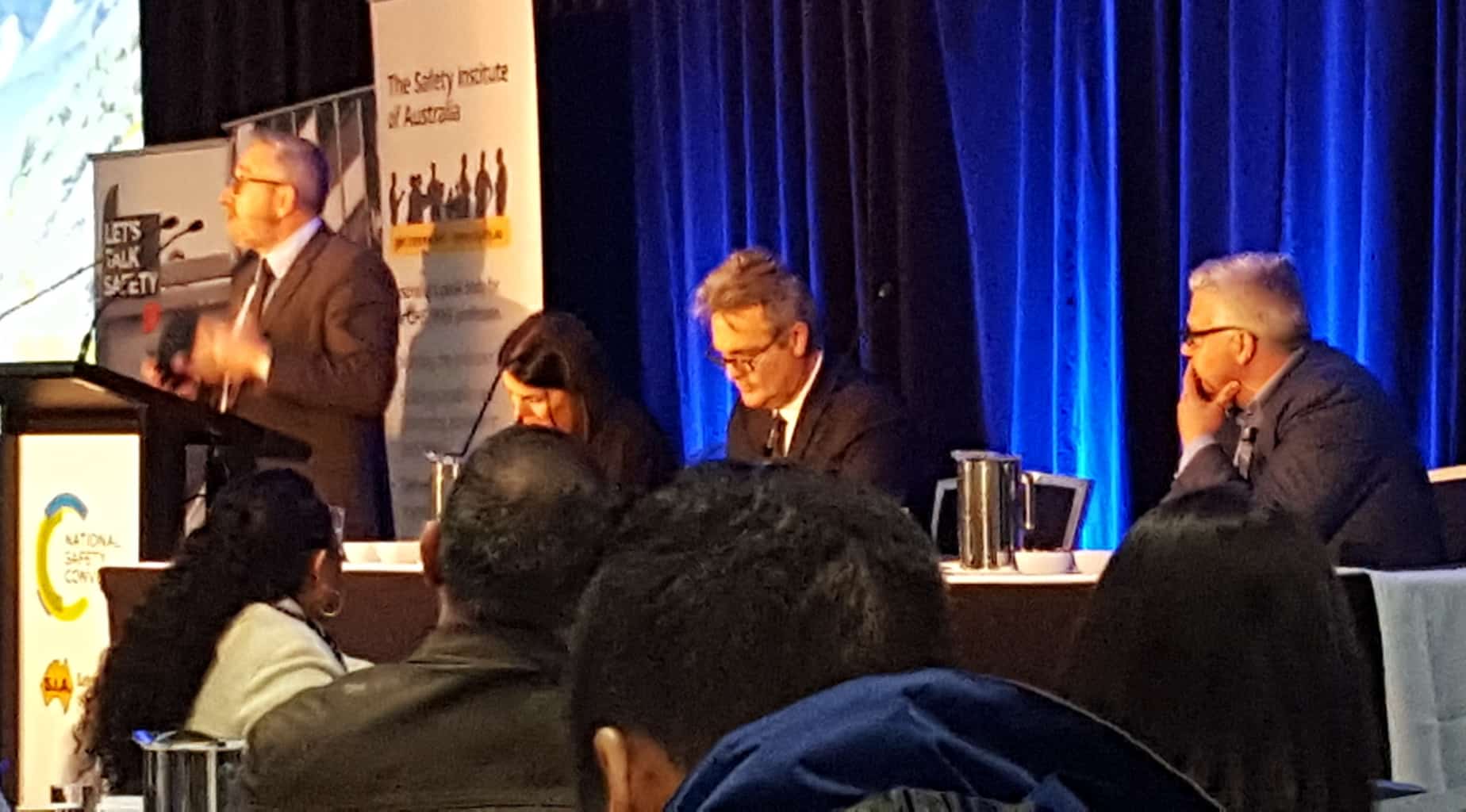Dr Maureen Hassall (pictured below on the left)says that mining has done great work in improving safety but the fatality rate has not dropped even though there has been some fluctuation. And the catastrophes have had similar causes. So why are mine workers continuing to die?
 Perhaps another question should be asked on whether the penalties for recurrent fatalities need to be escalated across the industry? Perhaps it could be possible to apply penalties across an industry sector, such as mining.
Perhaps another question should be asked on whether the penalties for recurrent fatalities need to be escalated across the industry? Perhaps it could be possible to apply penalties across an industry sector, such as mining.
The Safety Institute’s Safety Convention is becoming more conventional where the radical discussions of the first session today are being diluted. A significant question asked was all of this information is available but so what? What do we do to use this disruption? Those questions are what persist in delegates as they move to diverse streams and back to traditional safety discussions.
Dr Hassall spoke about the importance of defining control mechanisms and the need to assess and investigate and that mine safety has focused on devices, plant and equipment. Her presentation was curious because some of the most exciting OHS issues in mining have involved safety management – Digging Deeper – or the mental health of fly-in fly-out workers. There was no discussion of these risks even though they contributed to work-related fatalities. (Maybe I was in the wrong session or frame of mind)
There is also confusion in the delegates over the role of the Hierarchy of Controls and Critical Control Management. It seemed odd that a new approach, Critical Controls, was being proposed so many decades into OHS legislation when Controls were supposed to have already been well understood. Maybe disruption can come late to the party but still be effective.
Dr Hassall’s presentation supports the use of and collation of data digitally and in real time but the challenges that are present in mining, as identified by Dr Hassall needs discussion to clarify, which is one of the advantages of being at a safety conference.
Dr Gerry Ayers‘ (pictured above on-screen) presentation was all about death. He went through a list of construction industry deaths and importantly provided a personality to each of the deaths – who was left behind, who was affected by the death. Every safety conference needs this type of presentation to provide the real behind the theory.
Ayers’ presentation fits the theme of this conference because, as he says, there is nothing more disruptive than a workplace fatality. Some may see his presentation as focussing on the past with little pathway to the future and it would have been better to have Ayers in the audience so that he could contribute to the previous disruptive discussions, but his presentation was rightly described as sobering.
Trish Kerin (picture above, middle)of the Institution of Chemical Engineers Safety Centre spoke about the catastrophes in the process industries. To some extent, Kerin’s presentation illustrates the criticism of Dr David Borys about the gap between research dominated by inquiries into disasters and the safety management of the majority of businesses that exist in the small business sector. Disasters are politically significant so that is part of the reason.
The IChemE Safety Centre seems to be trying to redress the inhumanity that seems to have existed in process safety for decades. For a long time, process industry disasters have mostly been academic puzzles of what went wrong. Even when why what went wrong is considered, the attention was rarely on the leadership and executive (mis)management. This changed with Longford and Professor Andrew Hopkins’ report on the resultant Royal Commission. In the US, this changed with Texas City and Deepwater Horizon. It needs to continue more and before the next disaster.
This session has been very conventional compared to other sessions but the first session of the day did set an almost unreachable benchmark. It was one of those sessions whose importance is not realised until seen in the context of the whole conference.



